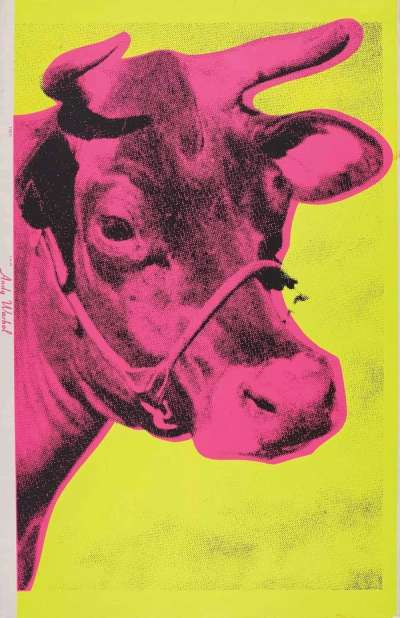
Cow (F. & S. II.11)

Cow (F. & S. II.11)
Signed Print
Andy Warhol
Price data unavailable
AAGR (5 years) This estimate blends recent public auction records with our own private sale data and network demand.
There aren't enough data points on this work for a comprehensive result. Please speak to a specialist by making an enquiry.
Medium: Screenprint
Edition size: 100
Year: 1966
Size: H 116cm x W 75cm
Signed: Yes
Format: Signed Print
TradingFloor
Track this artwork in realtime
Watch artwork, manage valuations, track your portfolio and return against your collection
Track auction value trend
Auction Results
| Auction Date | Auction House | Location | Hammer Price | Return to Seller | Buyer Paid |
|---|---|---|---|---|---|
| February 2024 | Rago | United States | |||
| September 2021 | Sotheby's New York | United States | |||
| June 2021 | Van Ham Fine Art Auctions | Germany | |||
| October 2019 | Freeman's | United States | |||
| July 2011 | Christie's New York | United States | |||
| May 2006 | Christie's New York | United States | |||
| October 2002 | Christie's London | United Kingdom |
Meaning & Analysis
Encouraged by the Pop art dealer Ivan Karp to consider the subject, Cow 1966 (F. & S. II.11) is the final print from Andy Warhol’s renowned Cow series (1966-76). The screen print shows a photographic image of a cows’ head coloured in bright pink and set against a vivid yellow backdrop. Warhol was highly experimental in his graphic explorations and the varied colour combinations across this series are exemplary of his unrivalled skill.
Karp’s suggestion of the subject came about because the art dealer considered it to be a durable image from the history of art that specifically referenced the traditional genre of pastoral landscape painting. Warhol took this suggestion and subverted it drastically by turning the seemingly timeless subject into a piece of fashion kitsch.
As an extension of the Cow series, that Warhol began in 1966, the artist decided to create a wallpaper out of the iconic image. The effect was playful and chaotic, disrupting the timelessness of the pastoral subject by transforming it into a mass-produced salable commodity. Cows are a common subject of genre painting that many people choose to display in their homes and with this print Warhol makes the point blatantly clear that fine art has been treated like wallpaper long before he literally did this with his own art.







